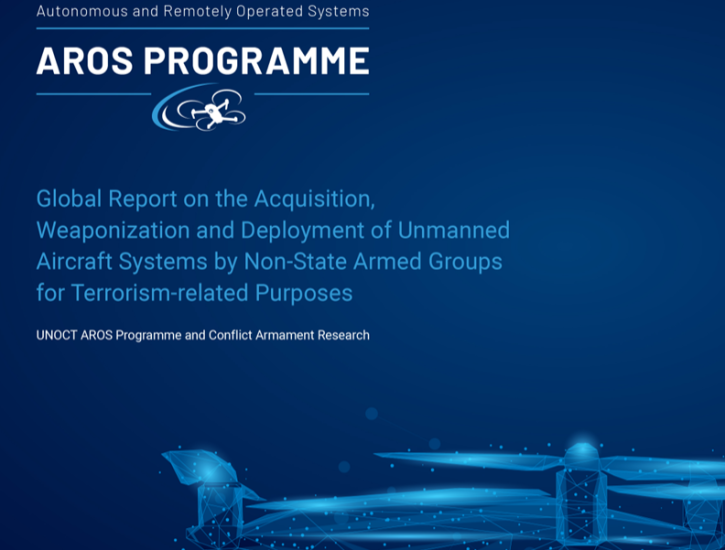The United Nations Office of Counter Terrorism’s Autonomous and Remotely Operated Systems group has published a new report “Global Report on the Acquisition, Weaponization and Deployment of Unmanned Aircraft Systems by Non-State Armed Groups for Terrorism-related Purposes” which tracks the growing use of drones by terrorist groups worldwide.
According to the report:
“The ability of non-State armed groups to acquire, weaponize and deploy unmanned aircraft systems (UAS) presents a significant threat to international peace and security and to the protection of civilians and civilian objects. In recent years, terrorism has become notably more diffuse and diverse in nature, aided in part by the adoption of new and emerging technologies, such as UAS.1 Non-State armed groups use UAS to conduct a wide range of activities that pose a security threat, including for terrorism-related purposes (e.g. attacks against, and incursions into, vulnerable targets, including critical infrastructure or public places (“soft targets”)); for intelligence, surveillance and reconnaissance; for targeting support; and for illicitly trafficking commodities such as drugs, arms and explosives….
“In 2023, the United Nations monitoring team concerning Da’esh, Al-Qaida and associated individuals, groups, undertakings and entities reported on four notable trends: more terrorist groups have developed UAS capabilities; some terrorist groups are actively seeking to identify new avenues for acquisition and advancement of UAS capabilities; some terrorists groups are sharing technology and training on the use of UAS; and the use of UAS by terrorist groups continues to proliferate globally.”
The study reports on the range of threats and uses by terrorist organisations, including the use of drones in chemical and biological attacks.
According to the report:
“Non-State armed groups, including terrorist groups, may seek to create their own weaponized ”spraying UAVs” through the addition of containers of liquid chemicals or biological agents that, combined with ventilation fans or aerosols, release the toxic substance. Five Member States reported that this mode of modification had been attempted or actualized in their countries by non-State armed groups (two States from Africa and three from Asia-Pacific). While the purpose of the addition of this mechanism was not reported for this study, one concerning possibility is the attempted dispersal of a chemical or biological agent. This was raised as a potential deployment concern by several States.
“One State in the Asia-Pacific region stated that it had observed terrorist actors in its national territory attempting to use UAS to attack cities and neighbouring countries with chemical weapons.”
For more information




